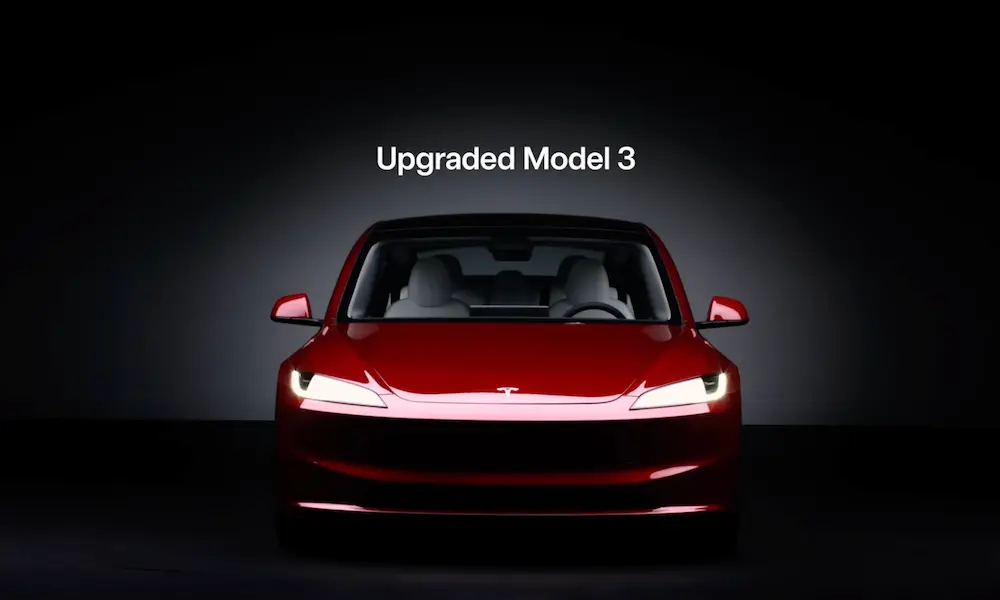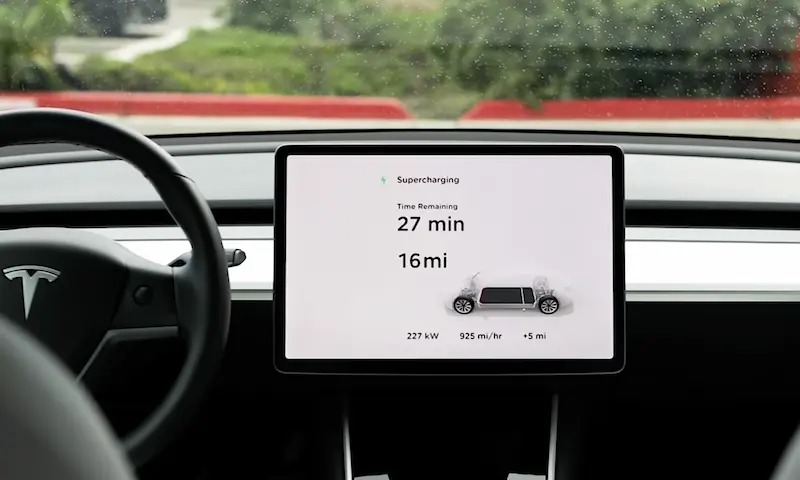Your Tesla comes with two batteries: the primary battery, and the auxiliary battery, a much smaller one compared to the primary battery.
Using a two-battery system allows both battery split functions, preventing the overloading of one battery.
In addition, Tesla’s Primary Battery powers most of the car’s electrical functions, including ignition. In contrast, the auxiliary battery powers the ancillary systems.
The “Electrical System Back up power is Unavailable” is triggered when a fault develops with the auxiliary battery of the Tesla. Here is what it means:
What is Electrical System Backup Power Is Unavailable?
“Electrical system backup power is unavailable” is triggered when something is wrong with the electric system backup.
The electric system backup ensures that the electrical components in your vehicle still function when the primary battery fails. It makes use of what is called a low-voltage battery.
Furthermore, a low-voltage battery provides power to some electrical components in your Tesla. Some of them include the lights, windows, and wipers. Even if the primary battery fails, you can open the doors, roll down the windows, and more.
What then happens if the system backup power or the low-voltage battery fails? The first thing that happens is that you will get the “Electric System Power is Unavailable” alert.
Furthermore, a failed electric power backup does not stop at a notification alone. Your Tesla will slowly reduce speed until it finally stops. It indicates that your vehicle is running entirely on the primary battery and needs to be managed.
What are the causes of Electrical System Backup Power Is Unavailable?
It is pretty hard to monitor the health of your Tesla backup battery, and that’s why many people get the “Electric System Power is Unavailable” alert. However, there are certain things that you could be doing that damage your battery. Some of them include the following.
1. Overcharging
Many people do not know this, but you can overcharge the battery of your Tesla. Usually, Tesla has a built-in system that prevents an overcharge. However, experts will advise you only to charge your vehicle to 95%, significantly, when you will not drive soon.
What happens is that when your Tesla battery is fully charged and not driven, it puts a lot of stress. Over time, the battery will deteriorate if this is done frequently or for too long, leading to a failing auxiliary battery.
2. Battery getting too hot
During summertime, you need to pay attention to the temperature of your Tesla and how you charge it. In the summertime, there is a high tendency for your battery gets overheated, especially if you are a person that likes parking outside.
When you drive under 40 degrees Celsius, your battery can suffer significant damage. In temperatures like 80 degrees Celsius, your battery may have a thermal runaway and catch fire.
When your auxiliary battery starts getting damaged from the heat, you will get an alert from your Tesla.
3. Undercharging
Not properly charging your Tesla battery and always driving at low capacity is not suitable for your battery. It could cause internal dendrites. Internal dendrites are when metallic microstructures form on lithium surfaces and penetrate electrolytes. As it spreads, it shortens the battery cells.
Once this happens, your battery may be unable to hold a charge. Your auxiliary Tesla battery will die faster, leading to an “Electric System Power is Unavailable” alert.
4. Discharging the battery to 0%
There have been cases where Tesla owners have successfully ‘bricked’ their car batteries with poor charging habits. They leave their battery uncharged for weeks or months. The battery then effectively drops to 0%.
In this case, it does not only affect the auxiliary battery but also the primary battery. If your auxiliary battery is the only one bricked, you will get an alert from your Tesla.
How to Fix “Electrical System Backup Power Unavailable”?
There are two significant ways you can fix this problem. The first possible way is by properly charging your Tesla battery. It could be that the battery is still in good condition but just low. You are good to go once you charge the battery and the alert disappears.
On the other hand, if you charge your Tesla battery and the alert is still there, you may need to change the auxiliary battery. You can do this by taking your vehicle to a Tesla service for proper work on your car.
Due to the complications of Tesla vehicles, it is always advisable to get problems like this fixed in a Tesla center.
What to do when you have an Electrical System Backup Power Is Unavailable Alert?
When you notice that an “Electric System Power is Unavailable” alert comes up on your vehicle, your car will naturally slow down. Ensure to try and park in a comfortable area.
You can switch on the vehicle back, but remember that your car is completely running on the primary battery. Try to drive to the nearest charging station to have a proper charge. If the alert is still there, drive to the nearest service center.
When driving with this alert, you will notice that your vehicle will display a lower range even when your primary battery is fully charged. It is because your car is no longer running on two batteries; all electrical load is on one battery.
How to prevent an Electrical System Backup Power Is Unavailable alert?
Following some tips, you can avoid having an “Electric System Power is Unavailable” alert. Below are some of those tips.
1. Avoid leaving your Tesla with a full battery for a long time without driving.
2. Ensure you do not leave your charger in, especially during extremely hot weather.
3. Avoid leaving your battery dead for a very long time.
4. Always have an 80 to 90 percent charge if you know you will not be driving for a while.
5. Maintain an everyday charging routine.
6. Only use the recommended charger by Tesla, or, better still, use Tesla chargers.
Final Thoughts
Avoid driving with an Electrical system backup power being unavailable alert. The reason is that you only have one battery to carry all the electric load. It means fewer distances before a charge is required. In some cases, the large load on the primary battery could also damage it.













